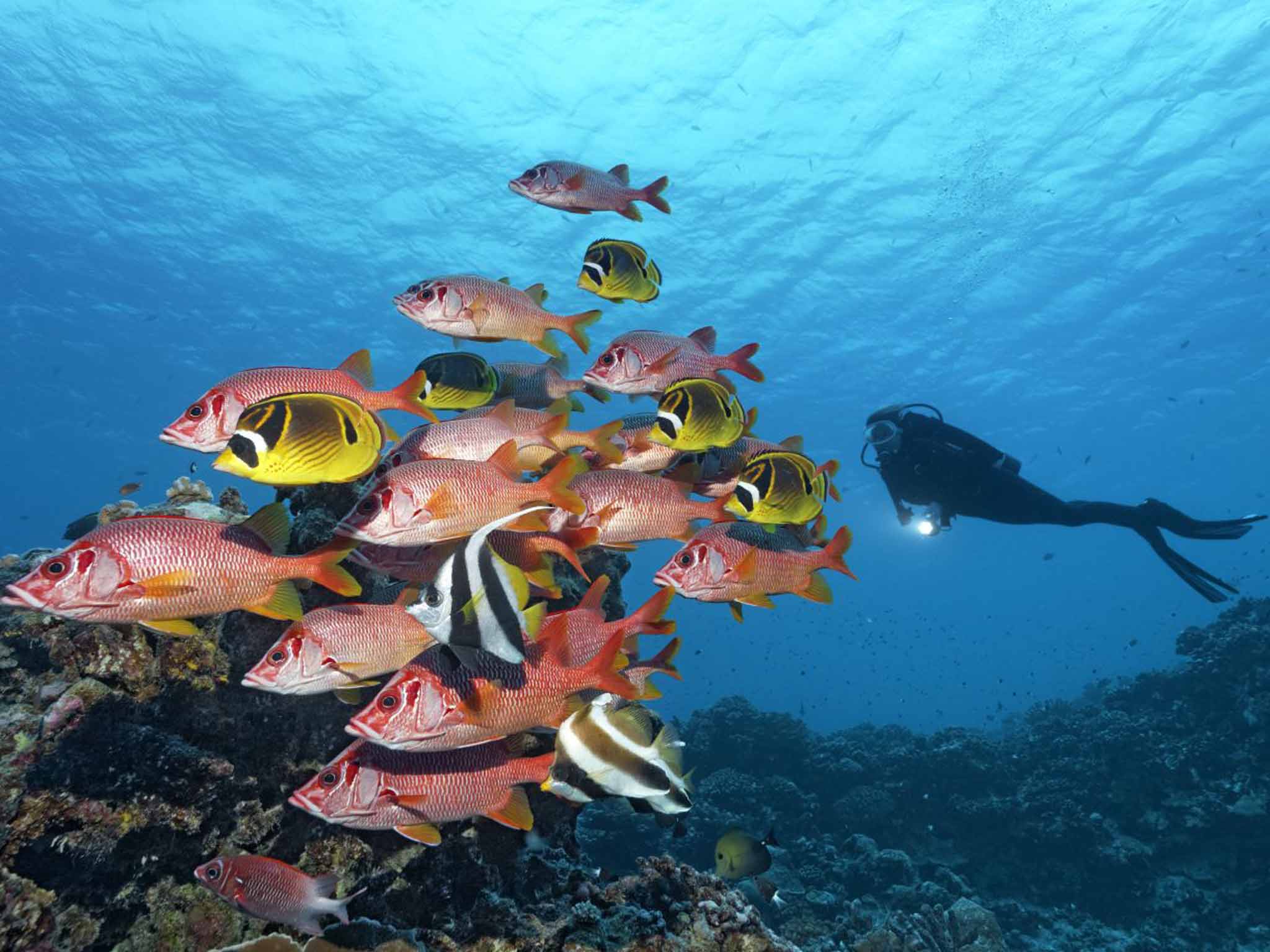Great Barrier Reef dying faster than ever, scientists confirm
World's biggest coral ecosystem suffers its most severe bleaching in recorded history due to warming sea temperatures

Your support helps us to tell the story
From reproductive rights to climate change to Big Tech, The Independent is on the ground when the story is developing. Whether it's investigating the financials of Elon Musk's pro-Trump PAC or producing our latest documentary, 'The A Word', which shines a light on the American women fighting for reproductive rights, we know how important it is to parse out the facts from the messaging.
At such a critical moment in US history, we need reporters on the ground. Your donation allows us to keep sending journalists to speak to both sides of the story.
The Independent is trusted by Americans across the entire political spectrum. And unlike many other quality news outlets, we choose not to lock Americans out of our reporting and analysis with paywalls. We believe quality journalism should be available to everyone, paid for by those who can afford it.
Your support makes all the difference.A mass bleaching event on the Great Barrier Reef this year killed more corals than ever before, scientists have confirmed.
The new findings add to growing concern for the health of the reef, with some worrying that it may soon be entirely dead after intense damage from global warming. The bleaching leaves more than two thirds of corals destroyed across large swathes of the biodiverse site.
The 2,300-kilometre (1,400-mile) long reef - the world's biggest coral ecosystem - suffered its most severe bleaching in recorded history due to warming sea temperatures during March and April with the northern third bearing the brunt.
Follow-up underwater surveys, backing earlier aerial studies, have revealed a 700-kilometre stretch of reefs in the less-accessible, and more pristine, north lost 67 percent of their shallow-water corals in the past eight to nine months.
But further south over the vast central and southern regions, including major tourist areas around Cairns and the Whitsunday Islands, there was a much lower death toll.
“Most of the losses in 2016 have occurred in the northern, most-pristine part of the Great Barrier Reef,” said Terry Hughes, head of the Centre of Excellence for Coral Reef Studies at James Cook University.
“This region escaped with minor damage in two earlier bleaching events in 1998 and 2002, but this time around it has been badly affected.”

Bleaching occurs when abnormal environmental conditions, such as warmer sea temperatures, cause corals to expel tiny photosynthetic algae, draining them of their colour.
Scientists estimate the northern region, which teems with marine life, will take at least 10-15 years to regain lost corals, but are concerned that a fourth major bleaching event may occur before that, hampering the recovery.
Earlier this year, the reef studies centre warned that if greenhouse gases keep rising, similar events will be the new normal, occurring every two years by the mid-2030s.
Given reefs need so long to recover from severe bleaching, it said “we are likely to lose large parts of the Great Barrier Reef in just a couple of decades”.
There had been fears that the bleaching would badly hurt the tourism industry but Andrew Baird, who led teams of divers to re-survey the reefs in October and November, said the more accessible parts had not suffered as badly.
“The good news is the southern two-thirds of the reef has escaped with minor damage,” he said.
“On average, six percent of bleached corals died in the central region in 2016, and only one percent in the south. The corals have now regained their vibrant colour, and these reefs are in good condition.”
Tourism on the World Heritage-listed reef, which is also under pressure from farming run-off, development and the coral-eating crown-of-thorns starfish, employs 70,000 people and generates Aus$5 billion (US$3.7 billion) in income each year.
Additional reporting by AFP
Join our commenting forum
Join thought-provoking conversations, follow other Independent readers and see their replies
Comments